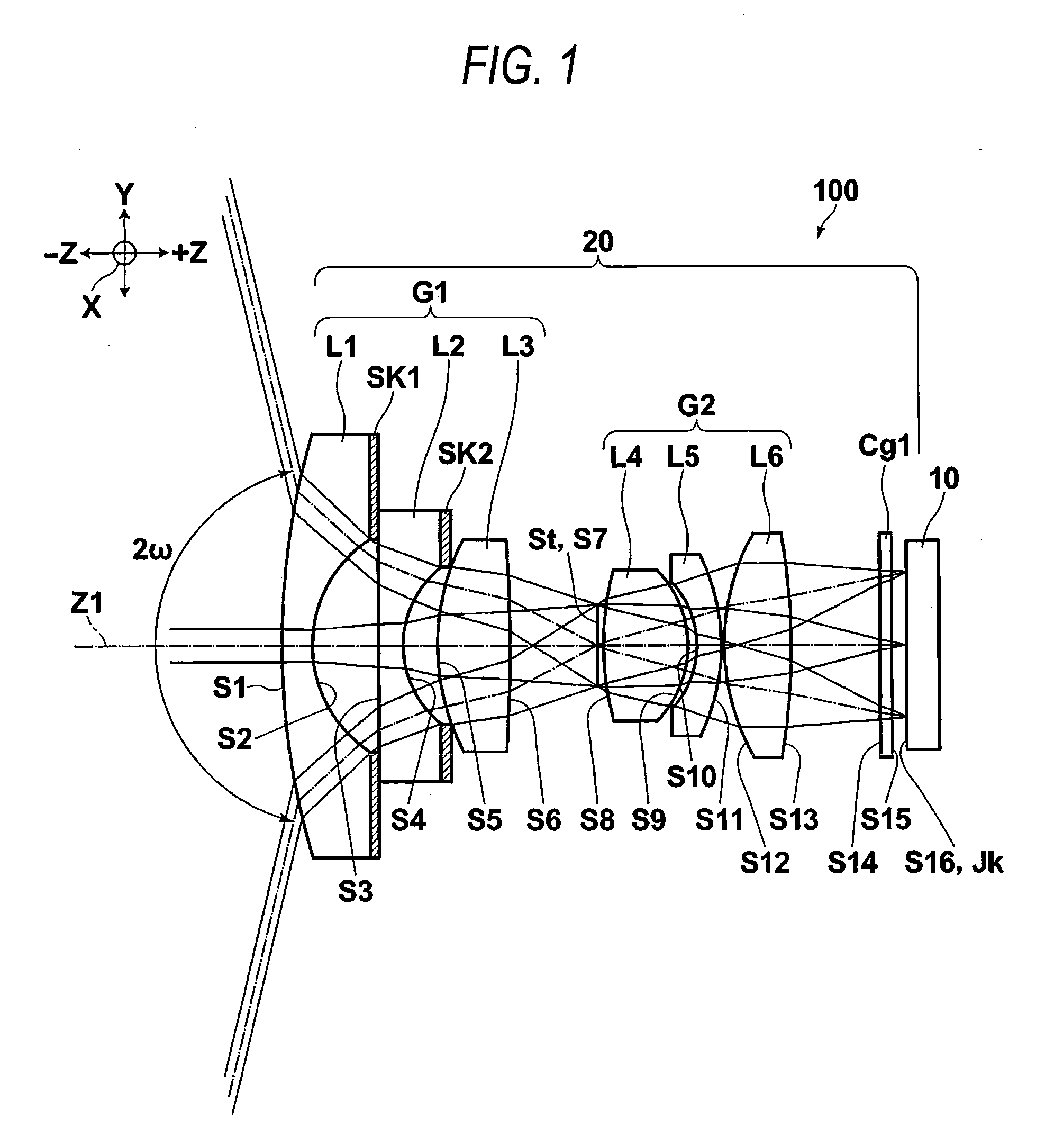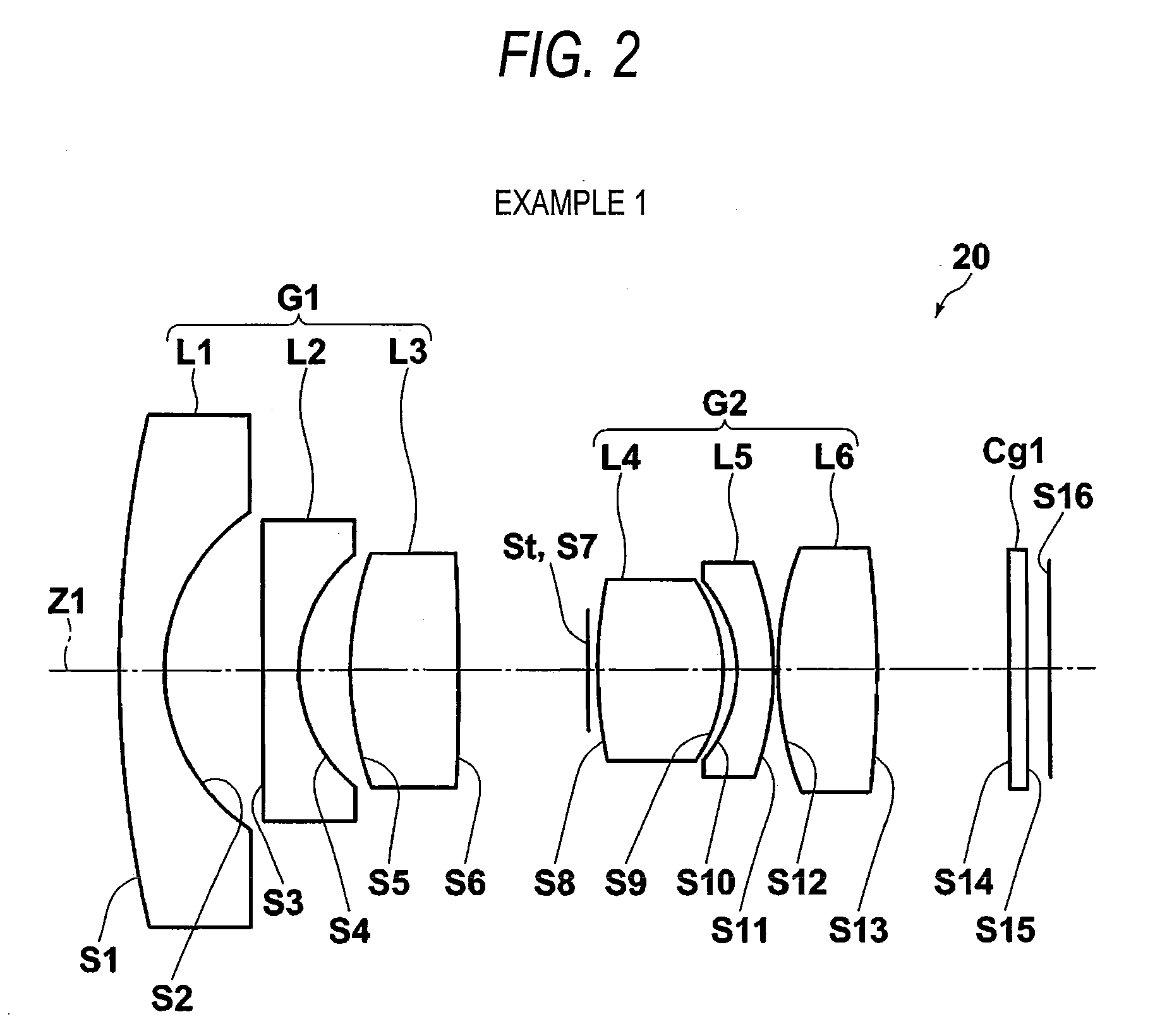Imaging lens and imaging apparatus using imaging lens
a technology of imaging lens and imaging apparatus, applied in the field of imaging lens, can solve the problems of increasing costs, increasing manufacturing costs, and significant temperature-related performance changes, and achieve the effect of improving environmental resistance without deteriorating lens performance and increasing manufacturing costs
- Summary
- Abstract
- Description
- Claims
- Application Information
AI Technical Summary
Benefits of technology
Problems solved by technology
Method used
Image
Examples
specific examples
[0199]Next, numerical data and the like in imaging lenses according to Examples 1 to 10 will be described together with reference to FIGS. 2 to 21 and Tables 1 to 11. FIGS. 2 to 11 show the schematic configuration of the imaging lenses according to Examples 1 to 10. In FIGS. 2 to 11, the same reference numerals as the reference numerals in FIG. 1 reference the same elements.
[0200]Tables 1 to 11 described below show basic data of the respective imaging lenses of Examples 1 to 10.
[0201]In Tables 1 to 10, lens data is described in the left portion (in the drawings, indicated by (a)), and the schematic specification of the imaging lens is described in the right portion (in the drawings, indicated by (b)).
[0202]With respect to lens data in the left portions of Table 1 to 10, the surface members of the optical members such as the lenses and the like are indicated by i (where i=1, 2, 3, . . . ) in an ascending order from the object side toward the image side. Lens data also includes the su...
PUM
 Login to View More
Login to View More Abstract
Description
Claims
Application Information
 Login to View More
Login to View More - R&D
- Intellectual Property
- Life Sciences
- Materials
- Tech Scout
- Unparalleled Data Quality
- Higher Quality Content
- 60% Fewer Hallucinations
Browse by: Latest US Patents, China's latest patents, Technical Efficacy Thesaurus, Application Domain, Technology Topic, Popular Technical Reports.
© 2025 PatSnap. All rights reserved.Legal|Privacy policy|Modern Slavery Act Transparency Statement|Sitemap|About US| Contact US: help@patsnap.com



